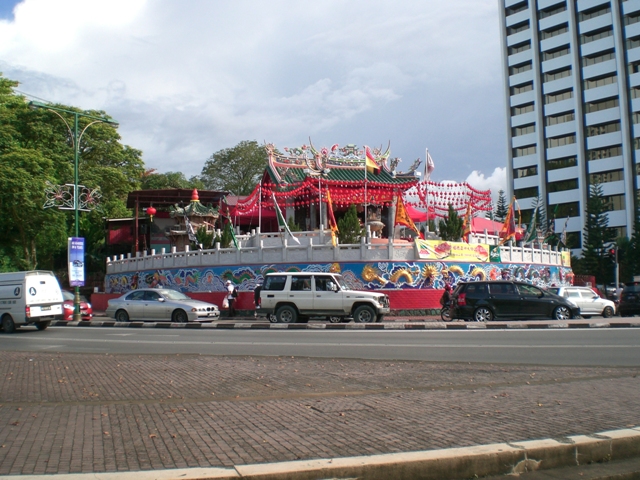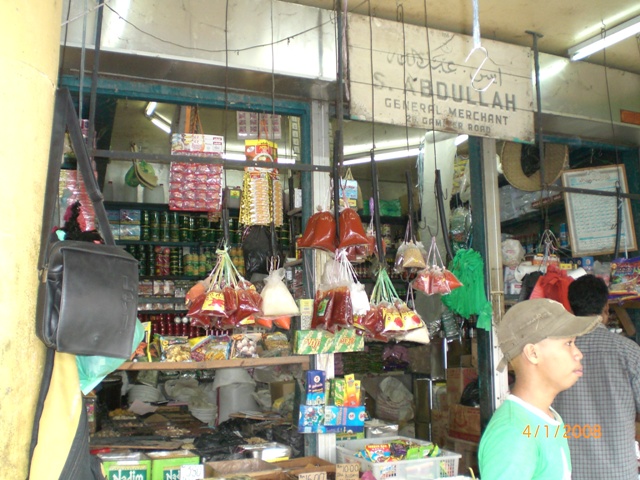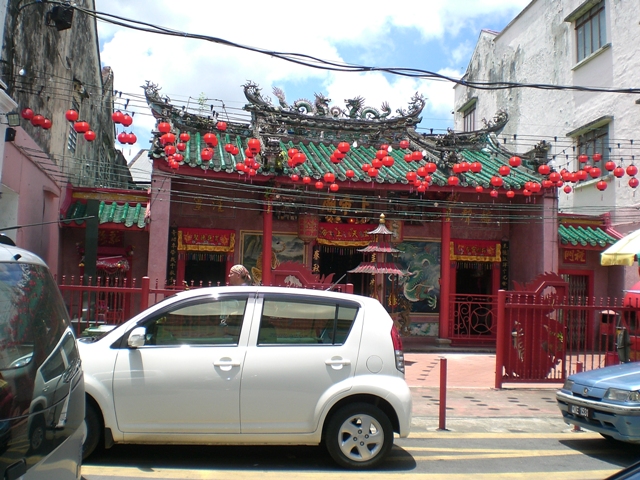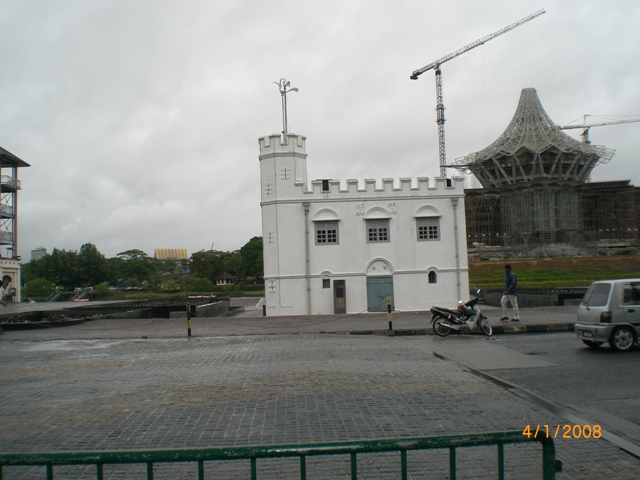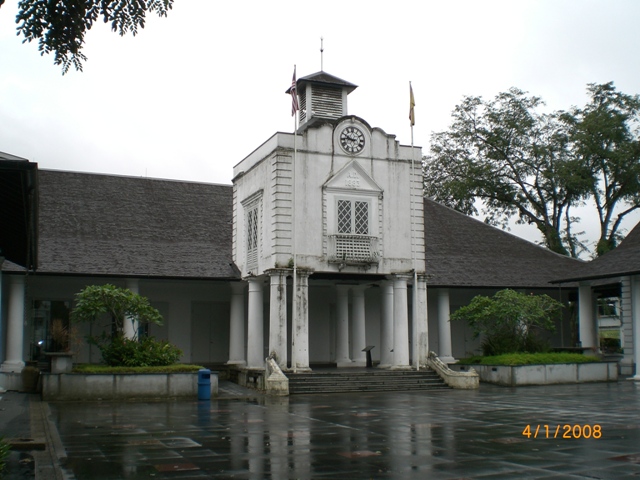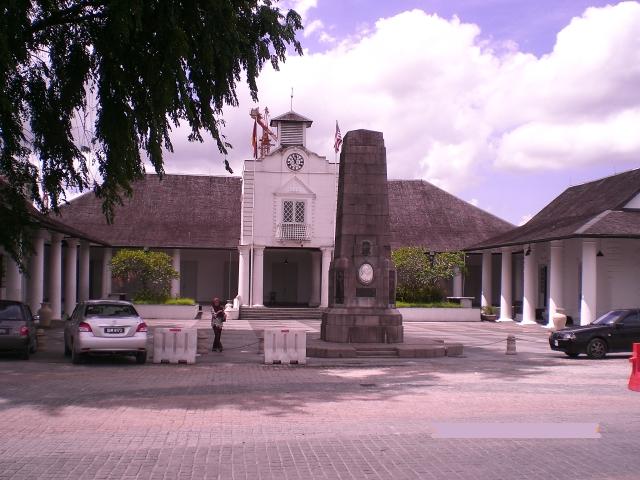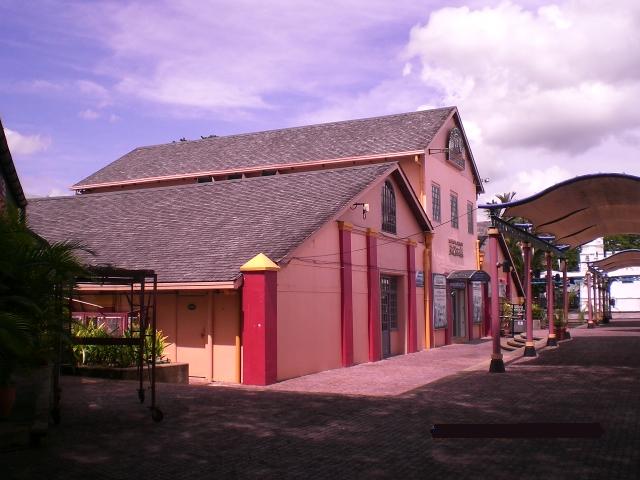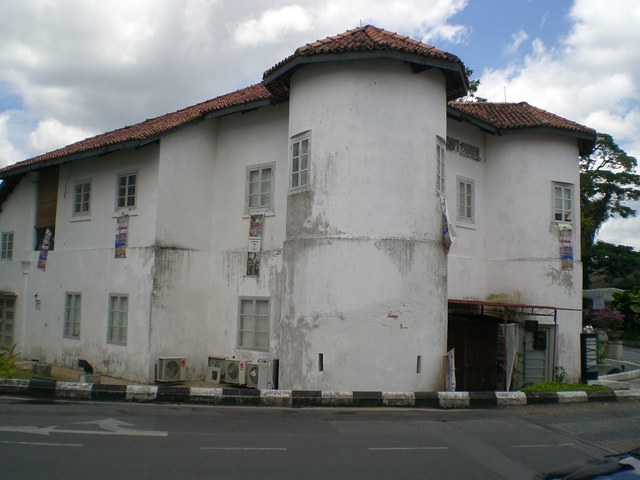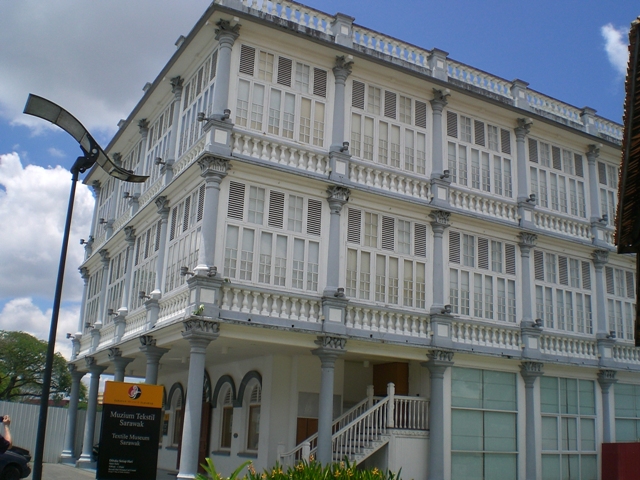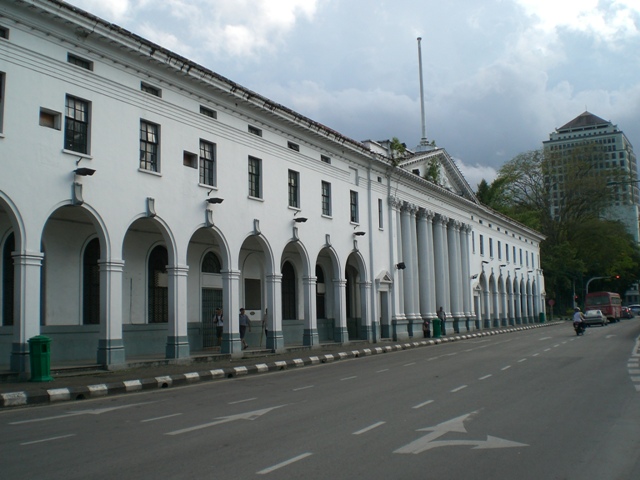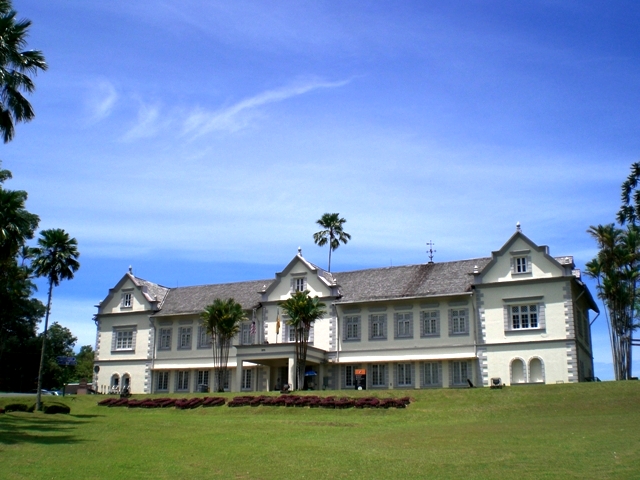The Old Quarter of Kuching is generally described as the area bounded by Wayang St until the Main Bazaar then going westward reaching Gambier Street, continuing until it reaches Power Street, Barrack Street and Carpenter Street, enclosing India Street within its confines. Within this enclave are found the oldest buildings and historical sites of the city.
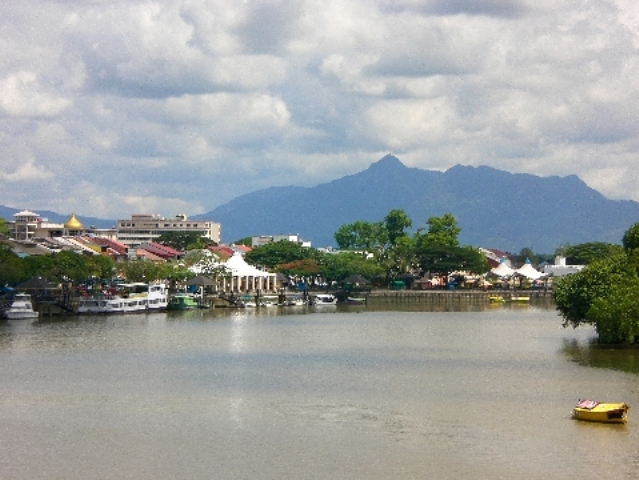
An iconic view of Old Kuching from the Waterfront looking westward. The Matang hills are in the background and the peak is Gunung Serapi at over 900 metres.
Starting with Wayang St., it has among its old building the ornate and beautiful Hong San Si Temple built almost 150 years ago. Going the direction of the Sarawak River, at the junction of Main Bazaar, you can see the Tua Pek Kong Temple to the right, and the row of old shophouses on your left, known as the Main Bazaar, which in the olden days were the downtown of Kuching, fronting the rivers where merchants and traders picked up their goods from sampans, small boats and steamers ships berthed at what is now the famed Kuching Waterfront. Nowadays many of the shops are turned into souvenirs outlets catering to trinkets-hunting tourists and visitors.
Gambier Street has even more older shops with the remnants of once vibrant Indian Muslim community still selling spices and sundry goods. There is even a century old Indian Mosque that is hidden among the shophouses! Some of the facades of the shops have not change for decades and evokes an nostalgic memories of the olden days. It would be a great pity if these shops have to be destroyed in the name of progress.
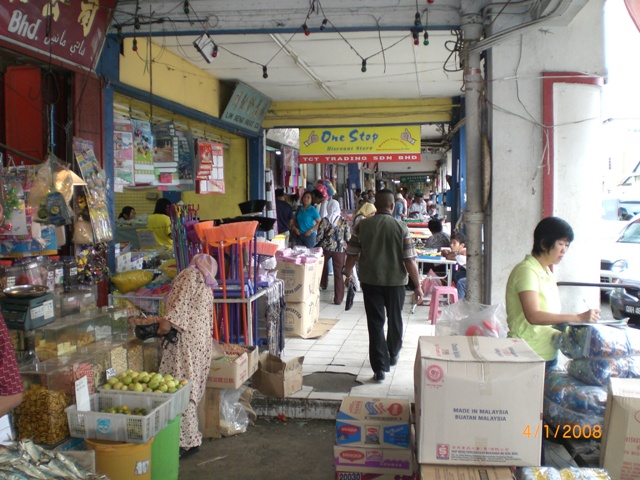
Shops in Gambier St. just opposite the Waterfront. This area has been the prefered grocery place for the kampung Malays living across the rivers for generations.
At the end of Gambier Street, turn left to turn into India Street, so called because of the presence of many Indian traders among its shops in the Brooke era. Only a handful of them remained and most are clothing dealers, booksellers and coffee shops. Many of the shops have been taken over by the Chinese .
The old Courthouse Complex, in between India St and Carpenter St. is underutilized now as the Sarawak Tourism Board’s office. There was a Middle Eastern restaurant called Little Lebanon operating there, but as of writing, there area is undergoing major construction of a big hotel and shopping complex, which is due to complete in 2014.
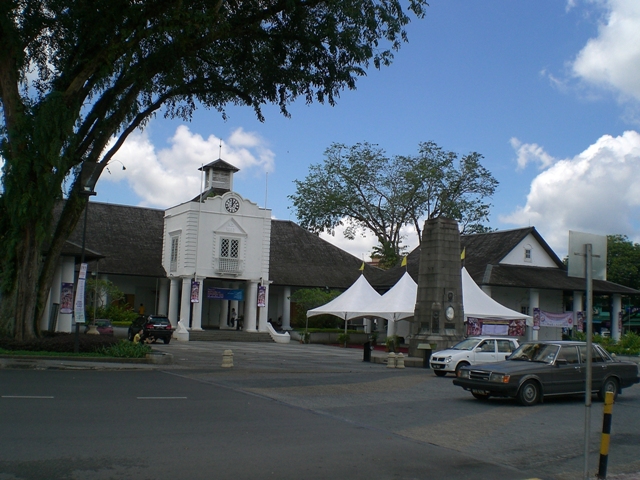
The Clock Tower stands in front of the Old Courthouse complex, dividing Gambier St. from the Main Bazaar.
The Carpenter Street is the most interesting old quarter of Kuching, for it is here that many traditional trades still flourish. There are traditional coffee shops, furniture shops, medicine shops, bookstores,goldsmith and tinsmith hidden among it alleyway. The presence of many backpackers browsing its narrow five-foot way in front of the shops attest to the popularity of this area to tourists. The famous Teo Chew temple (the Hiang Thian Siang Ti) and the Hokkien temple (The Hong San Si) are found along this street too.
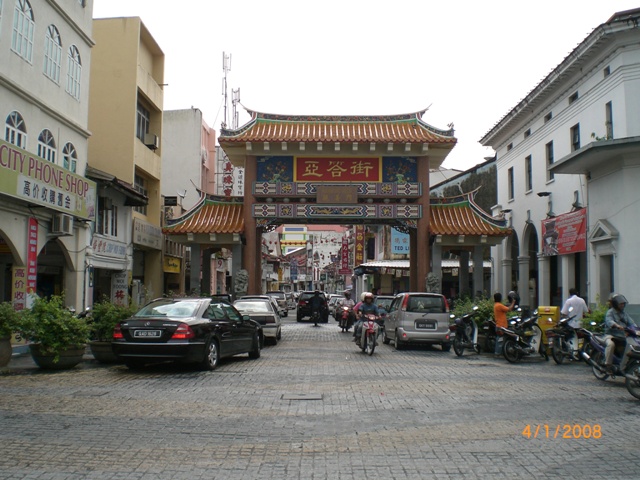
The ceremonial arch standing in front of the entrance to Carpenter Street, a thoroughfare teeming with old Chinese shophouses and temples.

Ewe Hai Street, the continuation of Carpenter Street meets Wayang Street, where another Chinese Temple (the red building) is located.
Old and historical buildings in this area are:-
The Chinese History Museum – (Built in 1912) and formerly a court built to handle the affairs of the local Chinese during the Brooke reign. After that the Chinese Chamber of Commerce took over the building until 1993 when it was turned into a repository for local Chinese history artifacts.
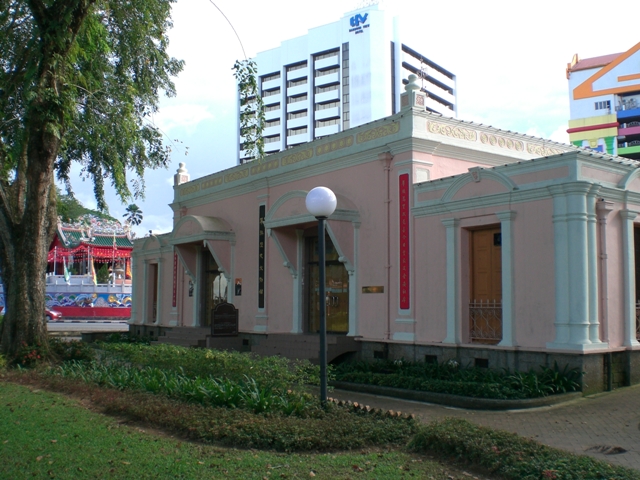
This is the former Court of the local Chinese community of Kuching and is now turned into a Chinese History Museum, on the ground of the Waterfront.
Located at the start of Main Bazaar, opposite the Tua Pek Kong temple.
The Square Tower (1879) – A look-out sentry post on the Waterfront between Gambier St and Main Bazaar. Originally built by the Second Rajah as a guard house, it now an art gallery.
The Clock Tower (1883), supposedly the definitive time keeping apparatus in its heydays for the denizen of old Kuching, but still justifies its upkeep as a touristy landmark.
The Charles Brooke Memorial (1924), an obelisk or 4-face plinth built in 1924 to commemorate the 2nd Rajah of Sarawak, Charles Brooke. The 4 corners of the columns are bas-relief of the 4 major races of the day: the Dayak, the Malay, the Chinese and the Kayan.
The Old Court House (1871) – a stately building that housed the seat of the government of the White Rajah and later turned into a court. Elegant columns run the length of the whole building and a manicured garden graces its inner courtyard. It was the state legislative building from 1878 till 1973. It now houses the Sarawak Tourism Bureau offices.
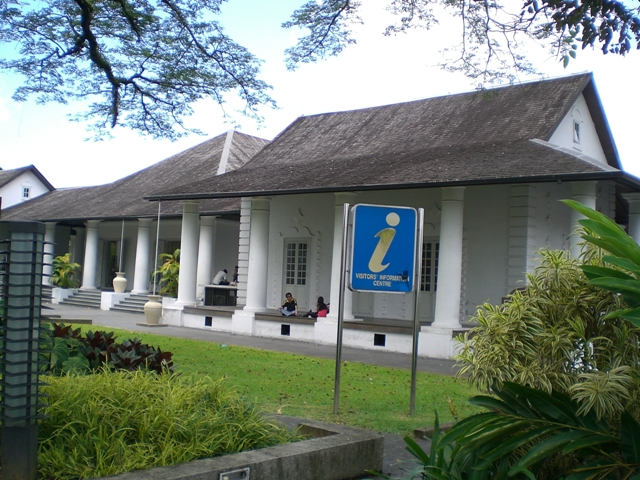
Side view of the Old Courthouse complex, now houses the Sarawak Tourism Bureau office, and is the Visitor Information Centre.
The Sarawak Steamship Building (1930) – In its heyday, the Sarawak Steamship Company owned a fleet of steamships and held almost monopoly the lucrative Kuching – Singapore run. This building was their office and warehouse and is now the Kuching Waterfront Bazaar, selling touristy souvenirs and bric-a-bracs.
The Round Tower (1886) – this building looks very Spanish with its whitewashed exterior, it was variously used as a government office, dispensary and clinic. Located between India St. and Carpenter St.
The Pavilion (1909), nicknamed “the square building” because its footprint is square – originally built as a government office, and was turned into a clinic and dispensary. Kuching old timers referred to going to hospital as going to “the square building”. This building now houses the Textile Museum.
The General Post Office (1931) – believed to be the only building in this region to employ impressive Corinthian columns for its facade. It is still a functioning PO. Located at the entrance to Carpenter St.
The Sarawak Museum (1891) – A grand looking building on top of a hill right next to the Merdeka Palace Hotel. Located just outside the perimeter of the Old Quarter along Jalan Tun Hj Openg.
The Indian Mosque at Gambier Street
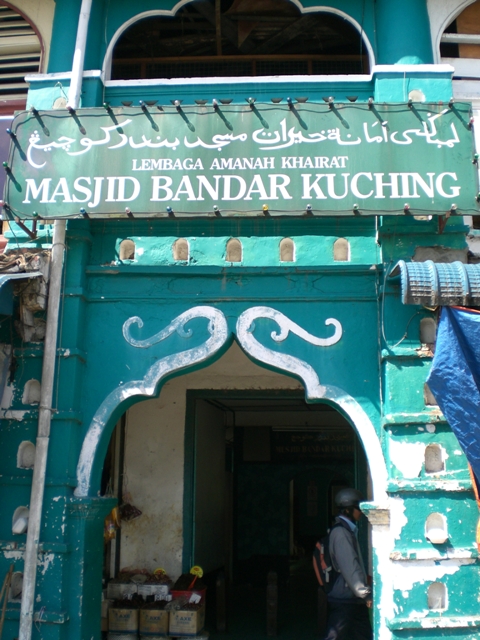
Unless you notice carefully, you will miss this century old Indian Mosque hidden among the row of shophouses in Gambier Street.
